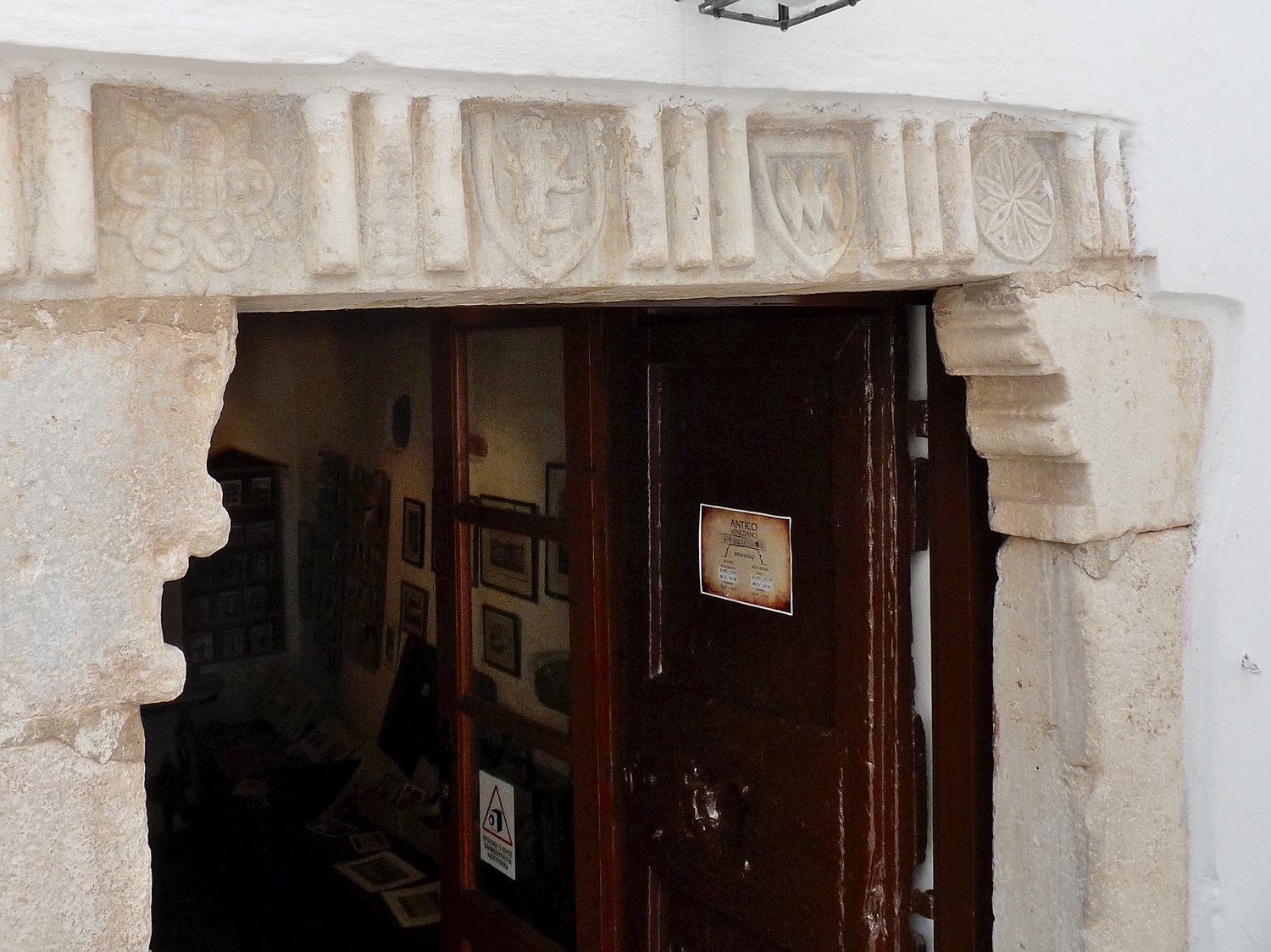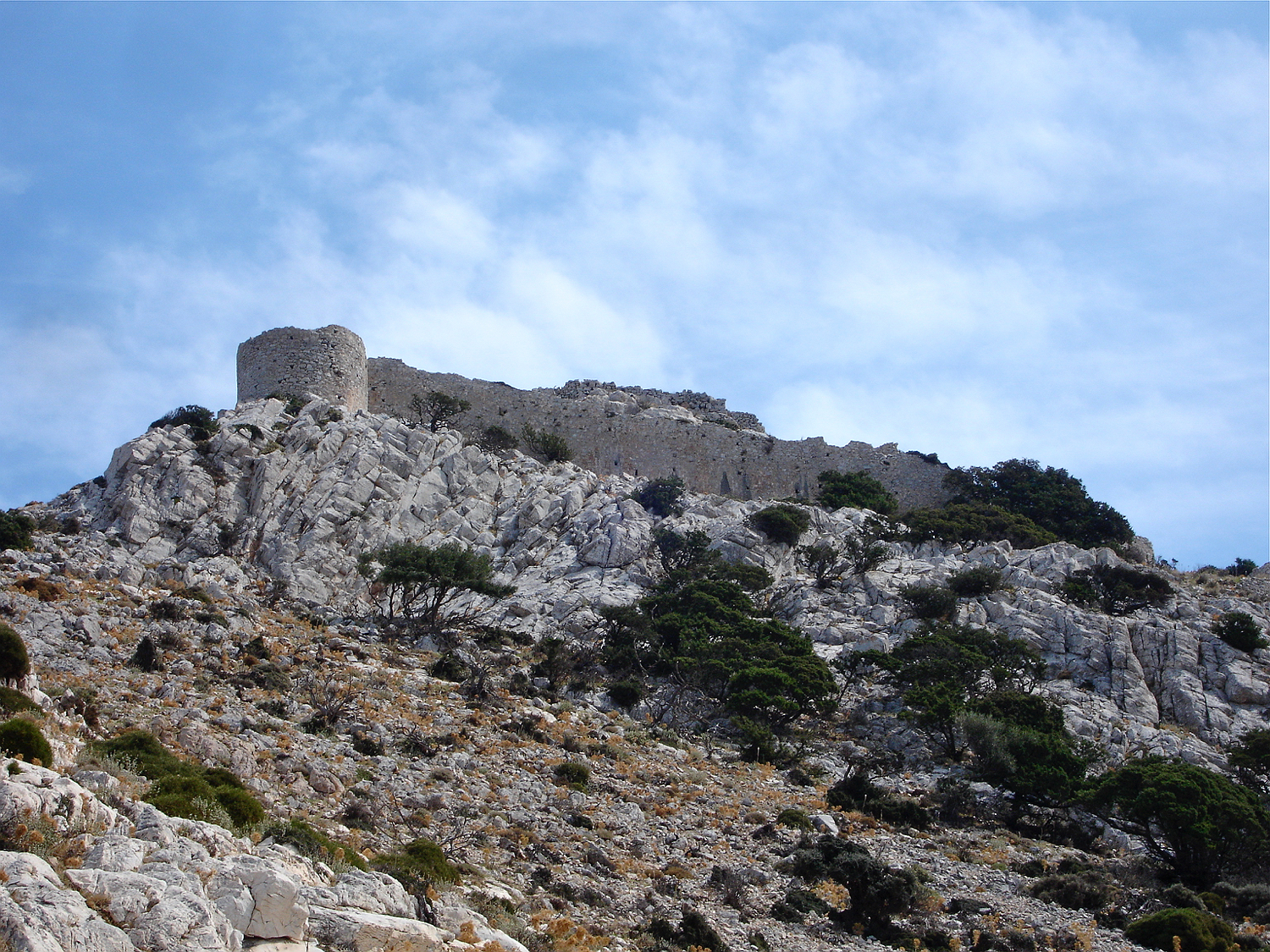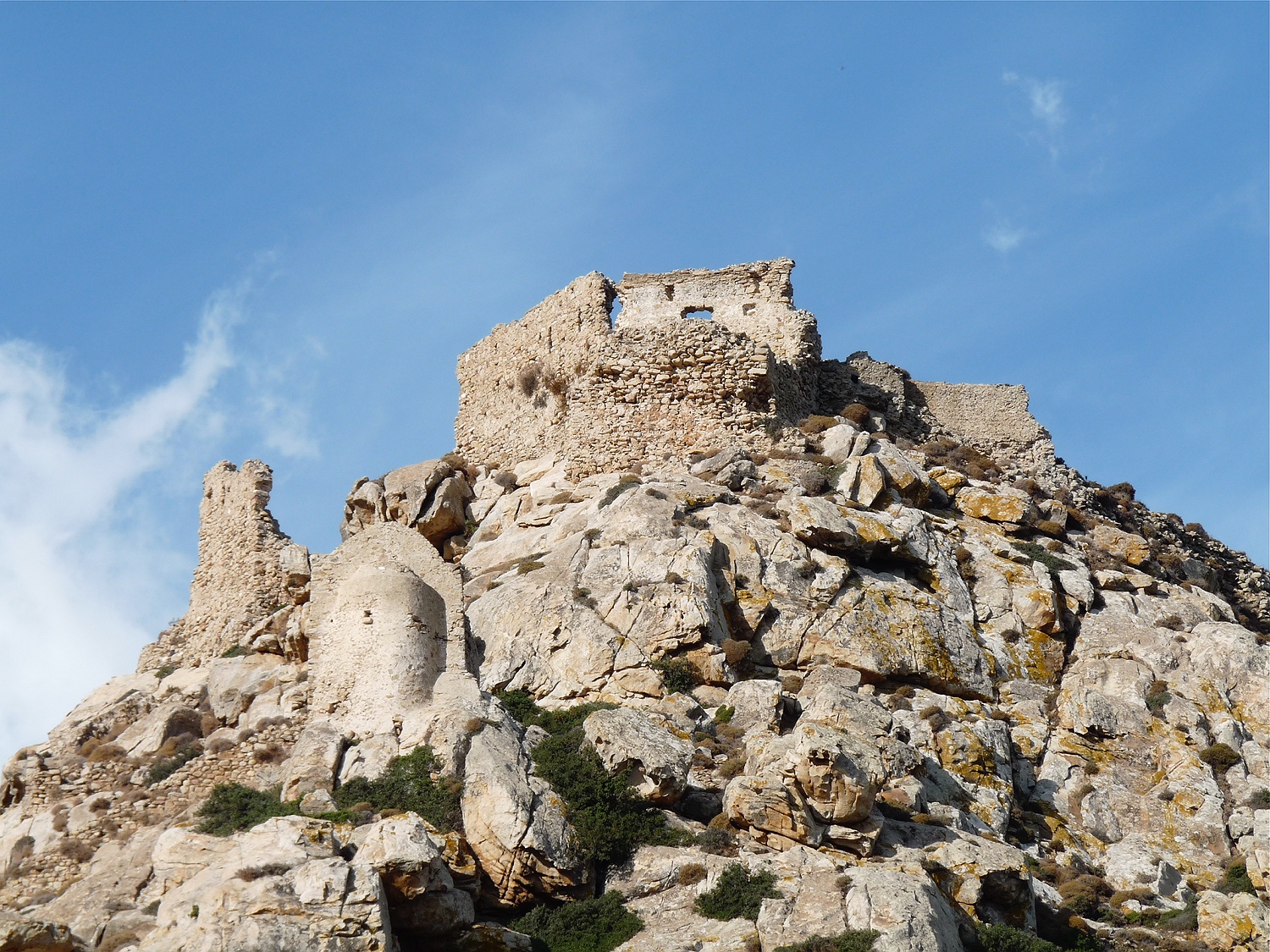
Naxos under the Venetians
IIn 1204, during the 4th Crusade, the Franks and Venetians conquered Constantinople, the capital of the Byzantine Empire, because the Emperor of Byzantium, who had called them to support him agains his enemies, was unable to pay the promised money. Constantinople was destroyed by the Crusaders, a catastrophe that led to an irreparable rift between the Orthodox and Catholic Church. The victors divided the conquered empire among themselves: France was awarded most of the mainland, Venice the islands. At this time, many of the islands were still in the hands of the Greeks or under the rule of pirates. The Venetian government therefore declared that it would make any of its citizens who conquered an island ruler over it; however, they had to recognise Venetian supremacy.

Venetian coats of arms above a door in the Castro (Chóra)
In 1207 the Venetian crusader Marco Sanudo sailed with his fleet to the Cyclades and conquered the south-eastern islands. Naxos was at that time in the hands of Genoese pirates (traders from Genoa and Venice were competing violently for trade routes and harbour rights in the Aegean), who retreated together with the Greek population to the Byzantine fortress of Apalírou when the Venetians approached the island. Marco Sanudo, who was a capable and brave warlord, burned his ships after landing on Naxos, thus depriving his men of their means of retreat. After a siege of five weeks, the Venetians took the castle and thus the island of Naxos.

the Byzantine fortress of Apalírou
Marco Sanudo established a Venetian dukedom, appointed himself Duke of the Aegean and built his seat of government on the then abandoned site of the present capital, the Chóra, on the ruins of the ancient town. He erected a strong fortified castle with a Catholic metropolis and fortified the harbour as landing place for his ships. Over time, two Greek settlements grew around the Castro of Chóra: Búrgos in the north, also surrounded by a defence wall, and a little later Nió Chorió in the south. The fortress of Apalírou and the nearby settlement, then the biggest town of the island, were destroyed and abandoned. Over the course of time, Marco Sanudo conquered several neighbouring islands, expanded his duchy and consolidated his rule.

the Venetian castro in the Chóra

Only one of the defense towers of the castle is still intact.
However, the Venetian was not loyal to his home city of Venice, but placed himself under the Frankish Emperor Henry of Constantinople. When he was ordered by the Venetians to help them conquer Crete, which was still in Greek hands, he soon defected to the Greek side and tried, albeit unsuccessfully, to make himself master of the island. Marco Sanudo later undertook military campaigns to the coast of Asia Minor and captured Smyrna, but this brought him into conflict with the Greek ruler of Nikaia (one of the three Byzantine successor states), Theodoros Laskari. The latter defeated him with his far superior fleet and took him prisoner; however, he admired the brave Venetian so much that he not only released him, but (according to reports) also gave him his sister in marriage. Throughout the years of its existence, the small Duchy of the Aegean was constantly involved in battles with its neighbours, with pirates of various nationalities roaming the Aegean, and in later years increasingly with the Ottoman Turks.
The descendants of Sanudo reigned as dukes over Naxos until 1371. Marco Sanudo had divided up the island’s lands among his fifty or so companions and appointed them feudal lords, although he left Greek landowners in their possession and in some cases reclaimed areas of land that had been abandoned at the time. The Catholic feudal lords built houses in the Castro of the Chora and also fortified residential towers in the villages of the island or on their estates, where they spent the summer.

fortified Venetian tower in Chalkí

Venetian tower near Agiá
The Catholic Venetians kept themselves strictly separate from the Orthodox Greeks. Under Marco the Second, grandson of the first duke, the Catholics tried to prevent the Greek population from practising certain religious customs, which caused such outrage among the Greeks that the duke ordered the fortress Apáno Kástro to be built (or restored) on the hilltop between the fertile valleys of Potamiá and Tragaía to prevent an uprising and to intimidate the Greeks. The fortress later served also as a refuge from pirate raids: The island was still plagued by Genoese, Catalan, Turkish and Arab pirates. Large parts of the population were taken into slavery several times and the island became impoverished and deserted. Many Greeks emigrated to the safer island of Crete.

The ruins of Apáno Kástro lie on the top of a barren granite mountain.

Not much remains of the castle.
In particular in the later centuries, the Venetian feudal lords ruled the Greek population with great severity: not only did they claim a third or even half of the harvest, but they also levied additional taxes at every opportunity, for example for the building of a house. They slaughtered the animals that strayed onto their land (and were deliberately driven onto it if necessary) and ordered the Greek farmers to perform forced labour, such as building public buildings and roads and rowing their ships. They also had unrestricted rights over the wives and children of their subjects. As a result, the relationship between the Catholic upper class and the Greek population was extremely bad.
The last duke of the family Sanudo, Nicolo dalle Carcere, son of Florentina Sanudo, attempted to conquer the city of Chalkida on Euboea, which was under Venetian rule. However, this displeased the Venetian rulers so much that they had him assassinated in 1383 by Francis Crispi, the ruler of the island of Milos, who was appointed the new Duke of Naxos. The Crispi family’s rule over Naxos did not bring about any improvement in the conditions on the island. The Catholic upper class exploited the Greek population so excessively that many Greeks even emigrated to the Ottoman Empire in Asia Minor.
The end of the Latin Empire and the Duchy of the Aegean
In 1261, Constantinople was reconquered by the Byzantine successor state of Nikaia and the Latin Empire came to an end after just over 50 years of existence. Byzantium was able to hold on for another 200 years, albeit greatly weakened and with a smaller territory, despite constant battles with its neighbours, until it was finally conquered by the Turks in 1453. The Duchy of the Aegean remained Venetian throughout this period and was able to maintain its independence from the Turks for almost a hundred years longer.
I n 1537, Duke John Crispi became tributary to the Turkish pirate Barbarossa, who had already established his naval supremacy in almost the entire Aegean. When he approached Naxos with his large fleet after the capture of the neighbouring island of Paros, the duke did not attempt defence, an obviously hopeless endeavour, although the Castro in the Chora had never been captured so far. Barbarossa plundered the city, but then reinstated the duke and left things on the island almost unchanged, except that the Venetians had to pay a significant annual tribute, which meant that the Greek population had to bear an even greater economic burden. After John’s death, his son Jacob was driven out by an uprising of the oppressed Greek population in 1566; the Greeks sought and found support from the Ottoman authorities against the Venetian lords. Jacob was deposed by the Turkish sultan and imprisoned for some time (afterwards he unsuccessfully tried to regain the duchy for decades). The island was now incorporated into the Ottoman Empire, albeit initially still as a duchy with a Jew named Joseph Nasi appointed by the Turks as duke. For the population, the situation under Turkish rule hardly changed at first: the Catholic feudal lords remained in possession of their lands and in their position of power over the Orthodox Greeks. With the death of Nasi 13 years later, the Duchy of the Aegean was finally dissolved.
continue:
- The Venetian Castro in the Chora
- The Venetian fortress Apano Kastro
- The Venetian towers of Naxos
- The tower and the monastery in Agia
see also: